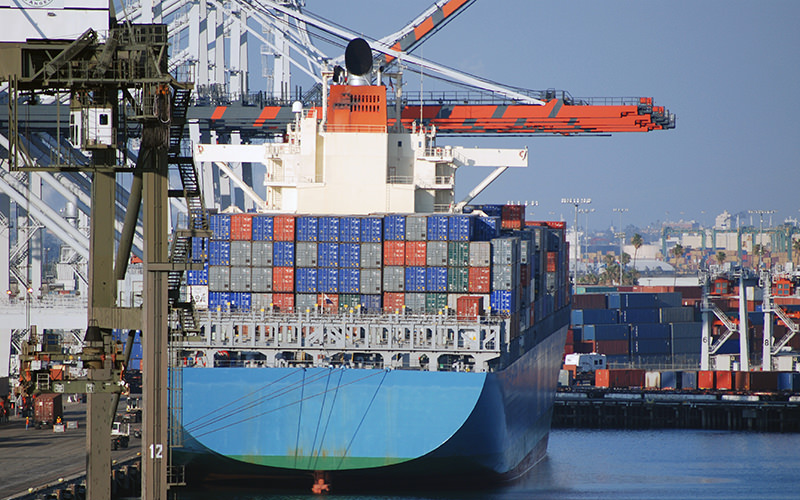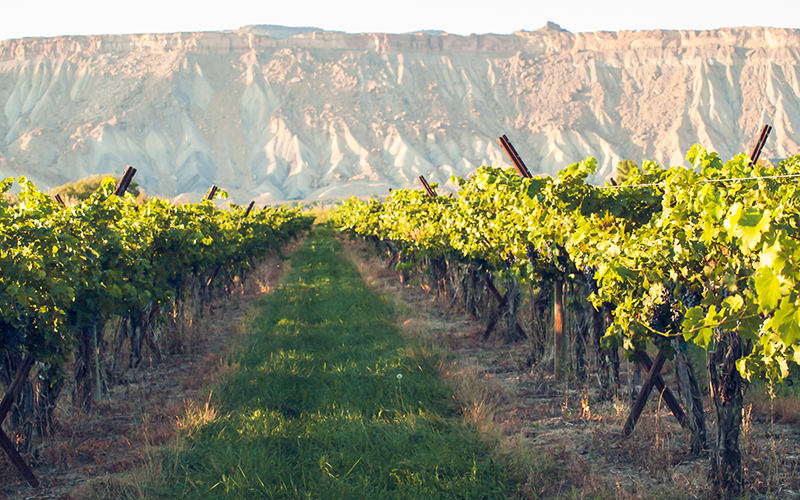We are surfing the second (or is it the third?) wave of locavorism, where the exotic and the homegrown collide.
Members of Generations X and Y, who were spoon-fed Alice Waters, M.F.K. Fisher, and Ruth Reichl’s brand of farm-chic gourmet, are seeking ever-higher spheres of authenticity. Their demands are driving tangible change that has affected the quality of food we eat, animal welfare, and workers’ salaries. (McDonald’s is no longer serving chicken treated with antibiotics, Cheerios has phased out GMOs, Mars and Hershey’s are publicly tracking their use of sustainably farmed ingredients, just a few of the big companies making often costly changes to their manufacturing practices to save their eroding market share, not to mention their public image.)
After all, who doesn’t want to shop for corn from their friendly family farmer at the neighborhood market? The feel-good factor shouldn’t be underestimated, and the superior freshness and taste of just-harvested fruit and veggies more than make up for the inconvenience of an extra errand.
But even the term “local” is subjective. While sales of local food have increased about 13% since 2008, and even Walmart plans to double its purchases of locally grown fruits and vegetables (to 9%) this year, it’s hard to figure out what “local” really means. One definition that has become nearly ubiquitous is ‘100 miles.’ The phrase is borrowed from the 2007 book, The 100-Mile Diet, by Alisa Smith and J.B. MacKinnon, which documented the Canadian couple’s attempt to only eat foods grown within 100 miles of their apartment.
While sales of local food have increased about 13% since 2008…it’s hard to figure out what “local” really means.
Other attempts to define local have proved somewhat illusive. According to consulting firm ATKearney’s 2013 report, “Ripe for Grocers: The Local Food Movement,” the majority of consumers studied (64%) say they define local as within 100 miles. Beyond that, though, 25% say 200 miles, 8% say 400, 37% say the same state (Texas, which is 790 miles long and 660 miles wide, pushes even the most liberal definition of “local”), 26% say the same region, 19% say natural or organic defines local, and 42% say as long as a product supports the local economy, it’s local.
Plus, according to the USDA, local is defined based on the distance from farm to store only. To be considered local by their standards, a product must be sold within 400 miles of its origin, or within the state.
Confused yet?
Things get even more complicated at cocktail hour. Drinking locally produced beverages is one thing. But locally grown? That’s where you may run into real trouble.
Take beer, for instance. “There’s a lot of confusion about what local really means,” said Lisa Witkowski, a certified Cicerone beer sommelier and beer educator at the Institute of Culinary Education. “Your life can be a highly personal art project, but sometimes your beer just can’t be — at least in the way people want, expect or understand it to be. Even if you want to drink a local beer or wine produced locally, chances are, it’s going to have hops from the Czech Republic or contain barley that isn’t indigenous to the region. And you know what? That’s cool.”
It’s easy to get carried away with nostalgia for a pre-Industrial period when we all milled our own flour, brewed our own ale, and sat by the fire and told many a fine tale. But let’s just say we could hop back in time — would we like the beer, wine, and booze we tried? (Never mind the odors, absence of Google, and distinctly unenlightened civilians.)
“You do not want to drink a beer that they would have brewed in your backyard in 1480,” Witkowski explained. “Yes, it’s marvelous and inspiring that, in New York City, where I live, I have an amazing array of delicious, locally made beers to choose from, and I love supporting them. But sometimes using hops from Europe makes the New York beer taste better. It’s like the locally raised chicken that I roast with imported olive oil and season with pepper — neither of which can possibly grow here. You can support your local economy and producers, but life would be very boring if we contained ourselves to only consuming 100% local, indigenous food and drinks.”

Craft beer, wine and hard alcohol are enjoying a Renaissance right now that is due at least in part to people’s insistence on consuming high-quality, locally crafted, ethically produced products. But how sustainable and realistic are our expectations?
According to the Brewers Association, there were 3,646 breweries in America as of 2014 — a 19% increase from 2013 — the vast majority of which are small and independent (about twice the number from five years prior). Four of the five biggest breweries posted volume declines last year — instead of the flat, sweet taste of Coors Light, consumers appear to want complexity, and let’s face it, fun. American craft brewers are cashing in, increasing volume by 18% in 2014, and producing 1 in 10 of every beer sold in the U.S. The total market for beer, meanwhile, was only up 0.5% in 2014.
Ultimately, beer is more of a commodity, because it contains several ingredients that grow very differently in different places. Buying a locally produced beer is kind of like buying a locally produced muffin. We do it because it tastes better than the mass-market brand, and because it feels better, too. If we sit down and think about it, most of us would vaguely hope that at least some of the components are local, but few of us would expect all of the barley and hops (and flour, cinnamon and sugar) to be grown within 100 miles. Carbon footprint aside, local beer is a sustainable, laudable enterprise that contributed $33.9 billion and and more than 360,000 jobs to the U.S. economy as of 2012, according to the Brewers Association. These indie businesses may even remain indie, according to the same analysis.
In Alaska, where it is far too cold to grow grapes, the Denali Winery in Anchorage crushes, ages, and makes wine from grape juice flown in from all over the world.
Wine, however, feels a bit more personally local. Grapes suitable (even if not, say, ideal, or of a varietal that customers are comfortable and familiar with) for wine can be grown, harvested, fermented and/or bottled in every state in America. While California, Oregon, Washington and New York dominate the market, there is at least one vineyard or producer in every state. In Alaska, where it is far too cold to grow grapes, the Denali Winery in Anchorage crushes, ages and makes wine from grape juice flown in from all over the world.
Alaska probably won’t become the “next big thing” in wine, but even some of the states that are gaining major market share use only SOME local grapes, depending on a significant share of grapes or juice flown in (primarily from California) to balance out some of the more Tooty Fruity-tasting local notes.
Take Texas. The Lone Star state is a rising star in the wine world, now the fifth-largest wine producer in the country, according to Wines & Vines Analytics. In 2014, the state cranked out 1.8 million cases, and in 2013, the industry contributed $1.88 billion to the state’s economy. Texas Hill Country was recently named one of the 10 best wine travel destinations in the world.
Texas is gorgeous, fun and cool — a slice of unique Americana, and a bucket-worthy destination for the hats alone. But is the juice any good? Extreme weather in Texas has forced many a winemaker to turn to grapes from California, and that’s creating a marketing conundrum.
 In 2014, the Texas Department of Agriculture announced a proposal to limit the use of the “Go Texan” logo on labels of wines that weren’t using 75% or more Texas-grown grapes — which is the minimum federal requirement to meet appellation of origin standards. The 1.8 million cases that Texas wineries generate include wine made from out-of-state grapes. Let’s to the math: together, 200 wineries in the state have just north of 4,000 acres of currently producing vineyards. About 3,000 additional acres have been planted in recent years, but it is unclear how many of those are producing as of now. According to Wines and Vines, an average yield on 4,000 acres would account for about 935,000 cases of wine, or just more than 50% of their production. (Compare that to about 1,200 wineries in California farming over 427,000 acres of vines).
In 2014, the Texas Department of Agriculture announced a proposal to limit the use of the “Go Texan” logo on labels of wines that weren’t using 75% or more Texas-grown grapes — which is the minimum federal requirement to meet appellation of origin standards. The 1.8 million cases that Texas wineries generate include wine made from out-of-state grapes. Let’s to the math: together, 200 wineries in the state have just north of 4,000 acres of currently producing vineyards. About 3,000 additional acres have been planted in recent years, but it is unclear how many of those are producing as of now. According to Wines and Vines, an average yield on 4,000 acres would account for about 935,000 cases of wine, or just more than 50% of their production. (Compare that to about 1,200 wineries in California farming over 427,000 acres of vines).
So what are Texas winemakers who use more than 25% of out-of-state grapes supposed to do? They simply label the appellation “American” instead of “Texas.”
Producers in Texas certainly aren’t alone. Last year in New York, extreme weather compelled New York State Agriculture Commissioner Richard Ball to allow wineries that suffered 40% or more crop loss to buy grapes and juice from out of state. Colorado was also devastated by the long, extremely cold winter.
Every state sets its own standards. In Connecticut, some wine activists are trying to push the minimum requirement of homegrown grapes up to 51% from the current 25%.
It’s an open secret in the wine world that a lot of local wine isn’t made from local grapes. BUT should local wine have to mean local grapes? By the traditionally understood definition of terroir, absolutely. Yet for winemakers in states with challenging weather, leaning on some percentage of out-of-state grapes may be part of their recipe for success. (Exactly how much so varies by winemaker and depends on factors like the success of their harvest and the availability of palate-pleasing homegrown grapes.)
If you’re at a restaurant and you order a salad, you want that tomato to be local in an ideal world. But if tomatoes won’t grow in that neighborhood, you’re still going to want a tomato.
“Consumers want locally produced products, it’s true,” said Shannon Gunier, the co-owner of North Coast Winegrape Brokers, a concierge service that connects grape growers in California, Oregon and Washington to winemakers all over the country. “But they also want something that’s going to taste good. Look, you can create a gorgeous winery in the country with a red barn, grow some grapes, bring in others from California, crush and ferment them on-site, and hire local people. You can make a living, support your community, and make a fantastic glass of wine. My husband and I always say, if you’re at a restaurant and you order a salad, you want that tomato to be local in an ideal world. But if tomatoes won’t grow in that neighborhood, you’re still going to want a tomato.”

Gunier says she would never try to sell Riesling grapes to a New York winery or a Cabernet Franc to a Virginian winery, where it wouldn’t make sense climate-wise. Still, consumers want the experience of local, but not necessarily the reality of what’s available in their state. “You would never buy an orange from Alaska,” Gunier explained. “Consumers, especially out East, are willing to try unique varietals and experiment, but the wineries we work with out East will still want to use our grapes for certain varietals that customers will also want, in addition to the hybrids.”
So what is the consumer looking for? Is it 100% local, or just 100% authentic?
Places like the Brooklyn Winery and the City Winery (with locations in New York, Chicago, Napa and Nashville) seem to offer an answer. From the Brooklyn Winery’s opening in 2010, they unapologetically marketed themselves as a boutique, urban winery, creating premium small-batch wines made from 70% New York State grapes and 30% California grapes. They are drawn to varietals that simply don’t flourish in their home-state, like their Pinot Noir from the Russian River Valley or their Old Vine Zinfandel from Lodi, or their Cabernet Sauvignon from Sonoma. There isn’t a vineyard on site, but tourists and locals flock to their tasting room to drink locally crushed and bottled wines, eat delicious, seasonal local food and hang out in a space that feels just as authentic, local and real as a vineyard in California. (With more than 20,000 visitors to their website a month and $3 million in event business at recent count, the winery is thriving.)
I think M.F.K. Fisher would approve.

